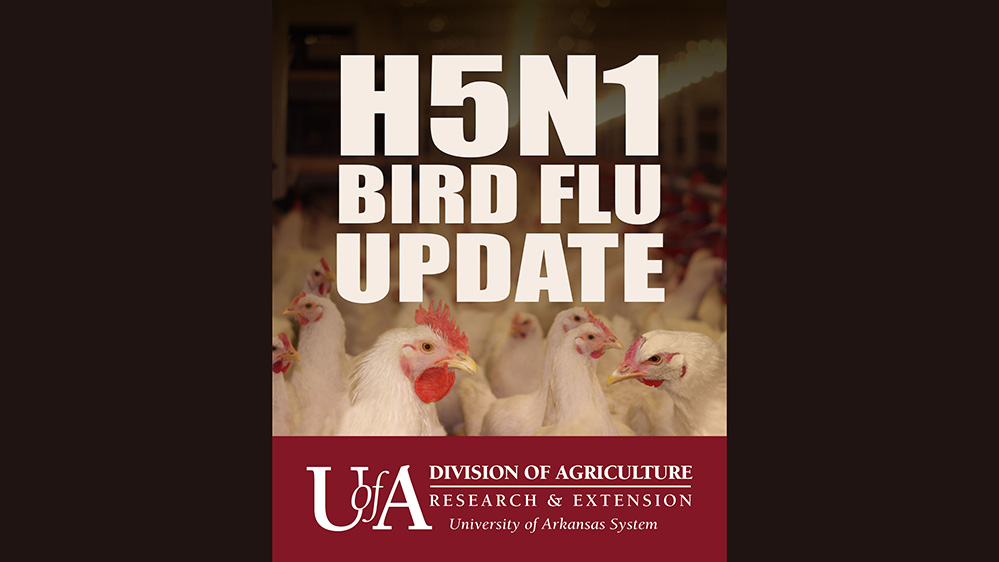LITTLE ROCK — Commercially prepared birdhouses shaped like cabins and decorated like a Hilton may be nice yard ornaments, but many go unnoticed by the songbirds people are trying to attract. The best bluebird houses often are crafted by hand, and rarely take more than a single 6-foot board, a handful of nails and some quality time with family members.
The AGFC has an easy nest box plan available at www.agfc.com/brochures ideal for an afternoon or weekend project. It takes minimal skills with a saw and hammer, and will be a fun addition to your yard for many years to come. A few cuts, some nails and one drilled entrance hole is all it takes to put together this basic home that will invite songbirds to stay a while and raise a family.

Many people want to extend the project by painting their birdhouse, but there’s no need to do so. White paint may make it slightly cooler in the summer, but can actually be a hindrance to birds using it. Some paints can be toxic to adult and juvenile birds. Lingering paint fumes also may keep the birds away until the birdhouse has been out for months, leading to some frustration from eager viewers. Keeping it basic is best, and cavity nesters like bluebirds will appreciate the natural touch.
Another bluebird house blunder is adding a perch near the opening. You might think you’re helping the bluebirds that will take up residence, but they don’t need the perch. Predatory birds who will destroy the bluebird’s nest, like house sparrows, will use the perch. The extra ledge also makes it easier for other nest predators to climb up and into the bluebird’s cozy home.
Be sure to include a couple of small holes in the bottom of the box to let water drain and a hole or two in the side near the top of the box to let air vent during summer.
Many songbirds like to nest where forests meet fields. This “edge†offers fast access to food as well as shelter. Bluebirds, in particular, nest in objects 4 to 6 feet off the ground close to the open side of the “edge,†such as fencerows. They even use the fence as a hunting perch to look for grasshoppers, katydids and other insects. Some gardeners like to put bluebird boxes near their gardens. The birds won’t touch your vegetables, and they eat hornworms, katydids and grasshoppers that can ravage your tomato crop.
Be careful to keep your bluebird house away from possible harm from predators. Raccoons, snakes and squirrels will destroy bluebird nests and eat the eggs. The largest threat to both mother bluebird and her chicks is the common housecat. Try to mount the box far enough from branches and fences so that a nest predator can’t jump on the box or stick a paw through the entrance, and keep the cat indoors. The best practice is to keep at least a foot of cleared area in all directions from the birdhouse. You can place it on a post or mount it to a piece of 1-inch diameter conduit pipe to make sure you have enough clearance from predators. The pipe may not look as appealing as mounting on a tree, but it helps prevent climbing species from getting to the nest inside.
The hard part comes after you’ve hung the birdhouse in a promising location — you have to wait. Sometimes birds may move in within days, but some birdhouses may sit vacant for a few months before birds find your offering. Resist the urge to open the box every day to see if there’s a bird inside. If they haven’t laid eggs and committed to the nest, you’ll likely scare them away. If you must take a quick peek, wait until the birds have finished laying their eggs.
It may seem like torture waiting for the birds to arrive, but once they do, the whole process is pretty fast. A pair of bluebirds can build their nest in a couple of days. The female will lay one egg per day until she has 4 to 6 eggs in the nest. Once the last egg is laid, the female and male will take turns incubating the eggs for 12-15 days before they hatch. The fully fledged chicks will emerge from the box 15-18 days later, but they often stay near the birdhouse with their parents until they are ready to venture out on their own.
There’s really no need to dump the old nest once the chicks have left the home. Adult bluebirds will clean it out and reuse the box up to four times in one year. Eastern bluebirds have been seen using nest boxes as late as August in Arkansas, so the best practice is to keep your distance and admire them from a safe distance.
Even though it’s called a bluebird box, there’s no telling what songbird may come calling. Carolina chickadees, Carolina wrens, tufted titmice and even an occasional tree swallow may take up residence. You may even open the box one morning to find a flying squirrel tucked away inside.
Visit www.agfc.com/education/free-




